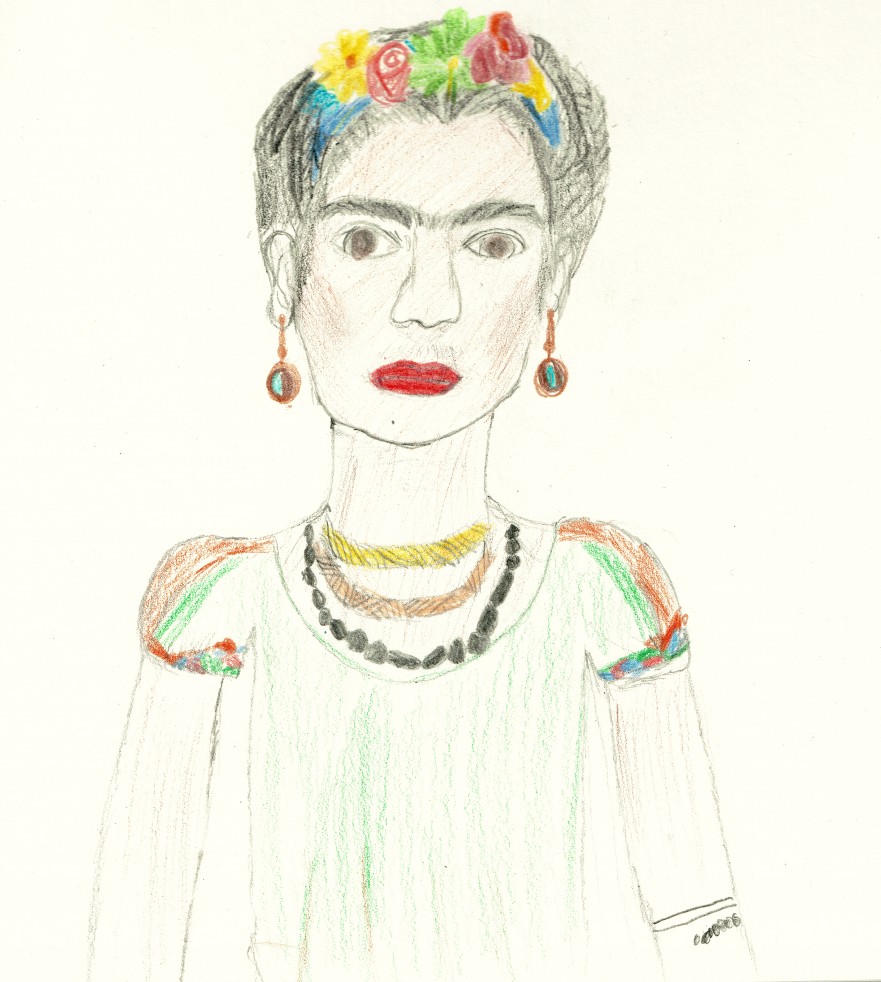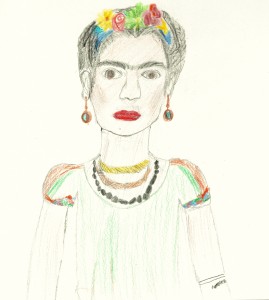Frida Kahlo is known for her vibrancy in art and life, and her courage. Although I have always loved the surreal, direct qualities of her portraits, I had forgotten that she experienced injury and illness that led to multiple physical disabilities. She spent much time in hospitals, and in a series of orthopedic corsets that enabled her to move through the world. The “Frida and Diego” exhibit at the Heard Museum in Phoenix displays photos of Kahlo in hospital beds and in corsets which she painted and made part of herself. She even featured them in some of her portraits. The way she made her disability both visible and part of her art and identity made me reflect on what I have been learning about dyslexia and public education.
We all know young people who seem anxious, resistant or disengaged at school. Many struggles that students face are, unlike Kahlo’s wheelchairs and corsets, invisible. The most heart-wrenching part of teaching is wondering whether a troubled or frustrated student might be facing an invisible obstacle such as a learning disability, hunger, abuse or even mental illness. Sometimes the desire to know our students is laced with the fear of learning the truth, or with concerns about our ability to help.
Dyslexia is one of those invisible obstacles that can go unidentified for years, with devastating effects. Public schools have faced criticism for not identifying and serving students with dyslexia. I have always wondered why there wasn’t more open discussion in IEP or 504 meetings and with counselors and parents.* There have been moments throughout my career when I was figuratively hushed from using the “D” word. In a room with activist parents and dyslexia professionals, I have more than once felt like a member of the opposition party… and wondered why.
Dyslexia is well-defined, whether you see it referred to as a specific learning disability, neuropsychological deficit or disorder. According to dyslexia consultant Sharon Hanna, It can be fairly easy to screen for dyslexia; however, an official diagnosis can be expensive for families to obtain.
This spring, the Arizona Department of Education released its new dyslexia handbook for parents and teachers. The book defines dyslexia as “a specific learning disorder that is neurological in origin. It is characterized by difficulties with accurate and/or fluent word recognition and by poor spelling and decoding abilities.** In other words, a dyslexic student often has problems with spelling even common words, decoding words, recognizing rhyme, confusing words with similar appearance or sounds, and difficulty decoding multisyllabic words. There is a plethora of information for parents and teachers on the web (see below). Read up.
- Fact: Approximately 15-20% of the population show signs of dyslexia.
- Fact: A student with dyslexia can still learn, and many can learn at the highest levels, given supports.
- Fact: Strategies exist to help students with dyslexia (and dysgraphia and dyscalulia) learn to read, write and manipulate numbers.
Recently, I wonder how many of my students have become stuck in English Language Development classes because they face invisible obstacles such as dyslexia. By state law, until my students pass the AZELLA exam, unless they qualify for special education services through an IEP, they are mandated to take 2-4 periods of English language acquisition courses. As I have written before, this requirement can have the unintended effect of denying students an on-time high school graduation. A dyslexic student will have a natural disadvantage on, among other things, the AZELLA, one that will not be addressed by the typical pedagogy in an ELD classroom.
My ELL students are just one specific example of why we must examine state and district policies regarding dyslexia. This invisible obstacle must be made visible so that we can form reasonable and research-driven policies that help all students achieve at the highest level. I myself have a lot to learn about the issue, but I plan on sharing what I am learning over a series of blogs devoted to dyslexia in Arizona schools.
The bottom line is that if we admire artists, thinkers and entrepreneurs who have been able to not only succeed despite a disability, but to actually own it, transform it like Frida Kahlo did with her beautifully and defiantly decorated corsets, then we owe it to all students to help make their canvas visible.
A Few Dyslexia Resources:
National Institute of Health Dyslexia Information Page
Arizona Department of Education Move on When Reading: Dyslexia (also, the new handbook)
Dyslexia Pathways Plus, Sharon Hanna, Reading Teacher and Dyslexia Tutor
Embracing Dyslexia Video
Yale Center for Dyslexia and Creativity
*IEP: Individual Education Plan which provides services to students with disabilities, 504 Plan: a student accommodation plan to account for a disability or illness. Both documents hold legal weight making schools accountable to serve students with disabilities or medical needs.
**Full Title: “Specific Learning Disability–Dyslexia: A Technical Assistance Document to Support Families and Teachers”










Comments 3
As a reading specialist, I often wonder which of my students have the challenge olf dyslexia. Sadly, even as an expert in reading, I have absolutely no training in identifying the condition or how to treat it. Everything I know about it, I have learned on my own. It is time we trained our teachers and specialists fully so we can meet the needs of our kids!
I really enjoyed this, Amethyst! I’m looking forward to the rest of the series!
What a beautiful and important piece, Amethyst! I appreciate an expert’s look at an issue that affects so many of my students. I am so grateful for this resource. I will be sharing!